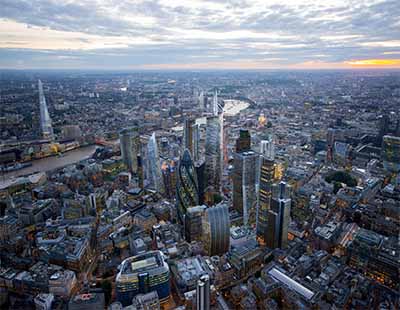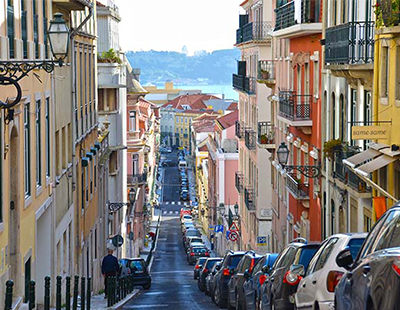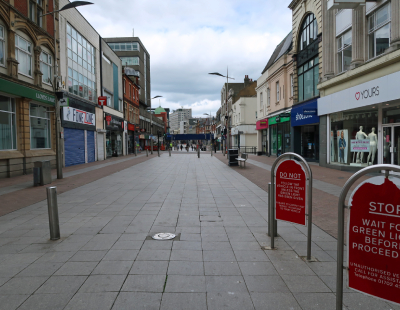The current government guidance says people in England should still work from home if possible, but there has been a push in some quarters to try and get people back into the office as lockdown eases.
Why does the area need reviving?
With the pandemic leading to a huge and sudden change in working patterns and practices, and a stay at home message for much of the last year, many city centres have been left deserted – virtual ghost towns – as workers have stayed away to cut the risk of transmitting the virus.
Pre-Covid, the Square Mile would be virtually deserted on weekends, but during the week it was one of the busiest and most bustling parts of London as commuters came from far and wide to work for various banks, insurance firms, startups and finance companies. At lunchtime, the area’s various cafes, pubs and lunch haunts would be packed to the rafters. In the evening, the area’s numerous bars, pubs, restaurants and clubs would often be very busy.
But that all changed when Covid hit and people started working from home rather than commuting in to the city. Weekdays in the Square Mile became similar to the weekends, with an eerie sense of calm and emptiness.
The City of London Corporation, as part of its recovery strategy to bounce back from Covid, has outlined how it will aim to meet the challenge of adapting to the new normal that is set to emerge after the pandemic. There is highly unlikely to be a return to the 9-5 office day, the rush hour commute, or the rat race that was seen before.
With this in mind, the governing body proposes a mixture of new schemes and refurbishments of old buildings to meet its housing targets, which includes at least 35% affordable housing. The Corporation has also said there is an ambition to deliver higher levels of affordable housing ‘where this is viable’.
Property firm Knight Frank says that, despite the area in and around the City dating back more than 2,000 years, to Roman times, much of its housing stock was actually constructed in the 1960s.
The agency told the BBC that in March 2020, there were approximately 7,850 residential units in the area many financial services firms call home - mostly found across purpose-built estates. The area has always been far more about business, finance and after-work drinks than it has been a place to live.
According to the BBC, under the new proposals published on Tuesday, long-term lets in empty buildings could be offered to creatives instead. The Corporation will also aim to attract ‘high-potential tech-led businesses’ to the area with various improvements, including making 5G available across the Square Mile.
“Firms have told us that they remain committed to retaining a central London hub but how they operate will inevitably change to reflect post-pandemic trends, such as hybrid and flexible working,” Catherine McGuinness, policy chair at the City of London Corporation, commented, arguing that the body has been trying to listen to organisations and how their needs have evolved during the Covid crisis.
"The Square Mile must evolve in order to provide an ecosystem that remains attractive to workers, visitors, learners and residents,” she added.
Is this the future?
In the last year, there have been many examples of office to residential conversions, as this trend has increased substantially during the pandemic. Meanwhile, high street retail giants such as John Lewis have entered the rental market to repurpose sites which no longer have their original use.
Working from home was on the rise before the pandemic, but still remained a relatively niche thing. The majority of office workers were in the office from Monday to Friday, 9-5 (or longer). The pandemic has seen a big shift and accelerated the trend for working from home, which was likely to come at some point but has been supercharged by Covid.
Many companies have embraced the new ways of working while employees have delighted at the better work/life balance and lack of commute that working from home on a regular basis affords.
Even major organisation such as BP have signalled that they see flexible working as the future, with the company saying its staff are set to work from home two days a week moving forward.
Hybrid working – which combines working from home with going into the office one, two or three days a week – is set to become much more commonplace in the future, with flexible workspace providers anticipating a huge leap in demand once the pandemic eases. Many companies are choosing to downsize their offices, too, creating flexible hubs instead of large, rigid, fixed offices which are half empty and costing a significant amount to run.
Not everyone is on board with the new ways of working, with US investment bank Goldman Sachs outspoken against remote working as the new normal. David Solomon, the bank’s chairman and chief executive, has labelled such ways of working an ‘aberration’.
However, his viewpoint would appear to be in the minority. From Facebook saying its employees can still work from home after Covid to high street building society Nationwide insisting its 13,000 staff can work from anywhere, the future of work is going to look very different and has given people much more flexibility than ever before.
Cities and former employment hubs – places that were more set up as places to work rather than places to live – will need to adapt and evolve to thrive in the new normal, and office and retail to residential is one way of doing this. By replacing empty offices with homes, people will be brought back to these areas, spending money, building communities and allowing existing or new businesses such as cafes, restaurants, bars, pubs, hairdressers, launderettes and newsagents to thrive once again.
The City of London is one of the most obvious examples of an area that needs to evolve, but it will be far from the only city centre hub that rethinks its whole identity as the world continues to change fast.









.png)










Join the conversation
Be the first to comment (please use the comment box below)
Please login to comment